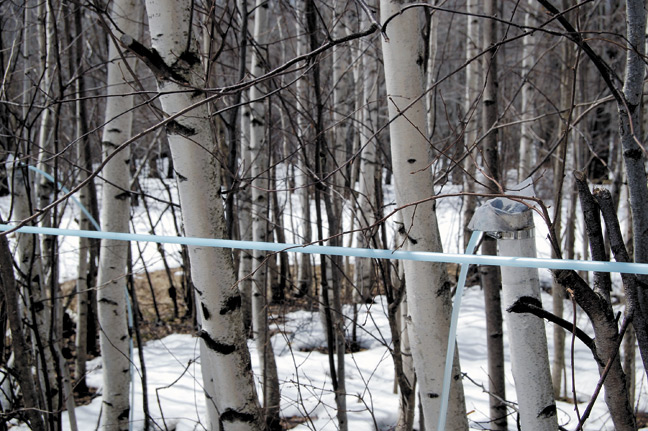UVM Proctor Page
Birch can help increase your maple operation profits
By BY ABBY VAN DEN BERG, TIMOTHY PERKINS AND MARK ISSELHARDT |
-

birch, maple, season, study, operations, sap, sugar content,
Birch syrup production is similar to maple syrup production – it uses mostly maple equipment (spouts, buckets or tubing, evaporators, etc.), and the spring sapflow season begins just as the maple season is ending.
A lower sap sugar content and shorter season duration have limited the profitability of birch production in the past, however these factors can now potentially be mitigated with the use of reverse osmosis and vacuum. In addition, birch syrup currently commands a high retail price (~$80 per quart), and there is growing demand from consumers for more locally-produced foods.
It is possible that maple producers with a birch resource in or near their existing operation could add birch production relatively simply and with little start-up expense, using their maple equipment that is not in use at the time, to generate new source of additional revenue.
To evaluate this, we conducted research and financial analyses to determine the average yields from birch trees tapped using vacuum, and whether adding birch syrup production to existing maple operations was likely to be profitable.
In general, the study found that yields per tap from birch trees in the northeastern US were similar to yields reported in commercial operations in Alaska, an average of about 16 gallons of sap, or 0.14 gallons of syrup equivalent per tap.
The financial analyses indicated that adding 100 or more birch taps to a maple operation was likely to result in a net profit (rather than a loss), and that greater revenues were likely to be obtained the more birch trees were tapped.
More details and the complete results from the study can be found at the UVM-PMRC website (www.uvm.edu/~pmrc) under “Birch Syrup Production”.
In addition, a spreadsheet is available to estimate whether adding birch production might be profitable in your operation. For questions, contact Dr. Abby van den Berg, Abby.vandenBerg@uvm.edu.
March 2015






























